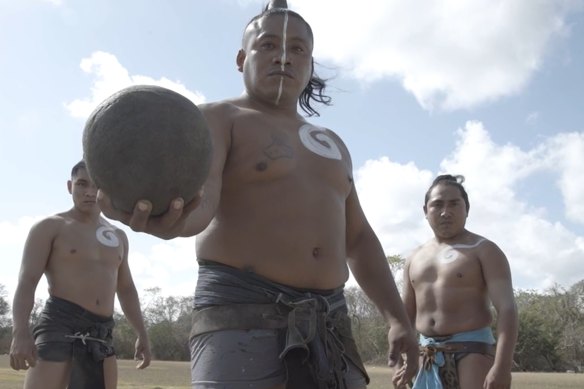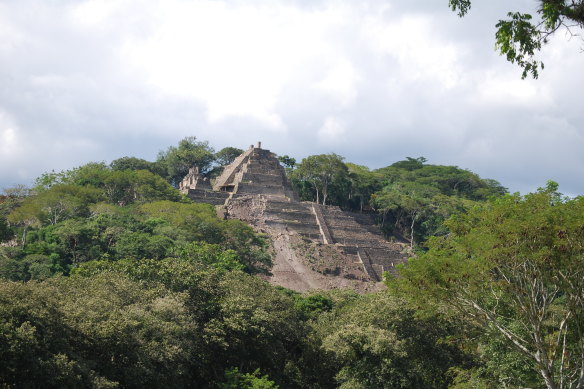This was published 2 years ago
Maya rulers kept rolling in afterlife in world’s oldest team sport
By James Crisp
London: The ashes of Maya rulers were incorporated into balls used for the world’s oldest-known team sport so that they could live on after death, an archaeologist claims.
Juan Yadeun Angulo discovered 400 urns containing ashes, coal, rubber and roots in a crypt at the Sun Temple at the Tonina archaeological site in Mexico.
The archaeologist believes the area, deep under the site’s most important pyramid and built between the 7th and 8th centuries, was used for cremations.

The Mesoamerica Ballgame Association in Mexico is reviving the pelota game to pay tribute to their members’ Maya ancestors.Credit: Screenshot/BBC
The ashes were mixed with roots and rubber, he believes, to make the heavy balls used in pelota, a ballgame used in religious rituals that was played in Mesoamerica thousands of years ago.
“We have evidence they were incorporated into balls. During the Classic Period the balls were gigantic,” said Yadeun, of Mexico’s National Institute of Anthropology and History. He said the Mayas wanted the remains of their rulers to be “converted into a life force, something to stimulate their people”.
Yadeun added that stone carvings found at the site supported his theory. The carvings suggest three rulers, who died between 722AD and 776AD, were taken to the “cave of the dead” for “transmutation”. “Just as Egyptians tried to preserve [bodies], we know here they were transformed in another way,” Yadeun said.
The Toniná archaeological site in southern Mexico is built on a hill in the Chiapas jungle and boasts a well-preserved sunken court where the Maya played pelota, the game that dates back more than 3000 years. Its rules are not clear but it is thought that the object of the game was to keep in play a ball that could weigh up to 40 kilograms.

A Mayan pyramid on the 5th terrace of the Acropolis at Toniná, Mexico.Credit: J. Antonio Cruz Coutiño/CC
Hips and forearms could be used to hit the ball in various versions of the game. Some scholars claim games ended with a human sacrifice.
Courts for the games were a focal point in ancient Maya cities and symbolised their wealth and power. They varied in size and had angled walls for the ball to bounce against.
A modern version of the game, ulama, is played by some indigenous populations. It was revived after the Catholic Spanish invaders suppressed it in the 16th century because of its importance in Maya rituals.
The Maya civilisation developed in the Mesoamerican region of south-eastern Mexico, Guatemala, Belize and parts of Honduras and El Salvador.
The last Maya city fell to the Spanish colonisers in 1697.
The Telegraph, London